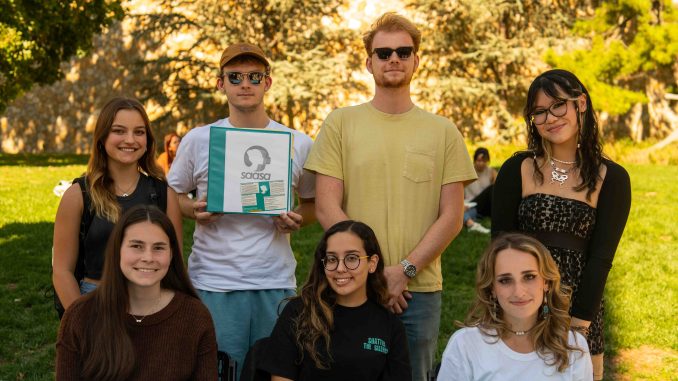
Updated at 12:11 a.m. on Oct. 14.
During Ray Epstein’s freshman year, she wanted to join a student organization that addresses sexual assault because of her own experiences.
She found Student Activists Against Sexual Assault on Owl Connect and became determined to join, but discovered the club was abandoned four years prior. She immediately began the process of reviving the organization and the club resumed a year later.
“For somebody who barely even knows where their classes are, what buildings are named, that was definitely a struggle,” Epstein, a sophomore English major, said.
After finding 10 members and reaching out to Title IX Coordinator Andrea Caporale Seiss to be the organization’s faculty sponsor, SAASA was officially reinstated this fall.
Today, SAASA hosts biweekly informational and event planning sessions, which include media analysis, Title IX rights education and discussions about sexual and domestic rights issues in the news. Through these meetings, SAASA hopes to fill the void of Title IX education on campus by creating a safe space for peer-led discussions on difficult issues related to sexual violence.
“Knowing your Title IX is so important to me and the only way to know them is for us to teach them,” Epstein said.
Much of Epstein’s passion for sexual violence activism comes from her own experience with sexual assault.
“Growing up in Washington DC, I have always been politically active, but my commitment to the anti-sexual violence movement skyrocketed after I was sexually assaulted by my first boyfriend in the 7th grade,” Epstein wrote in a newsletter distributed by SAASA.”The institutional neglect, ignorance, and victim-blaming I faced when coming forward convinced me I had to do something”
The organization’s goal is to eliminate sexual violence on campus by educating students about sexual assault prevention and survivor’s rights, Epstein said. The group hopes to connect with and support survivors of sexual violence through informational meetings and showings of solidarity.
“I would just hope at least like one person would feel like they have a community here,” said Benjamin Wilcox, senior communication and social influence major and SAASA’s communications chair.
The organization, which currently has 140 members, wants to use its increased membership as a way of showing solidarity with survivors of sexual violence.
“We’re really trying to focus on showing strength in numbers, and that’s one of the most important things with sexual assault,” Wilcox said.
SAASA hopes to visibly show survivors their support by organizing displays, like their Clothesline Project on Oct. 6, in high-traffic areas on campus like the Bell Tower.
“When you do something by the Bell Tower thousands of people will see it,” Wilcox said. “That’s like a guarantee.”
The work SAASA is doing with sexual assault advocacy is important, especially on a college campus where sexual assault happens so often, said Bella Kwok, a freshman political science major.
Kwok, who founded her own sexual assault club during high school, joined SAASA this fall to raise awareness about the issue.
“It gives students like a support system, just to know that like, there are students who have been through the same thing that you have,” Kwok said.
Public displays of solidarity like the Clothesline Project help show that SAASA is a peer-led space for students to educate themselves on sexual violence, which is often much more effective than administrative efforts to address these issues, Caporale Seiss said.
“Organizations like SAASA create a safe space for students to interact with and engage in uncomfortable conversations,” Caporale Seiss said.
The education that comes from these conversations allows for a more effective response to sexual violence by creating a network of informed students who are more capable of helping each other, Caporale Seiss said.
Only 12 percent of college students who are sexually assaulted file a police report, and many do not file reports due to a lack of knowledge of the process and their rights as a survivor, according to Know Your IX, an organization dedicated to informing students of their Title IX rights.
“When something like this happens, students typically go to another student first,” Caporale Seiss said. “So student education on these topics is incredibly important.”
SAASA has several events planned for the remainder of this year including a partnership with Take Back the Night, a sexual violence advocacy group founded in the 1970s, to organize a march in the spring semester. They also want to organize a “Shatter the Silence” plate-smashing event later this year.
After large turnouts at meetings and eager participation in the organization, members of SAASA are excited for the future of the club.
“We are ecstatic at the engagement and support we have been met with by our fellow Owls,” Epstein said.
A previous version of this story incorrectly quoted Ray Epstein’s comments on her experience with sexual assault.
A previous version of this story incorrectly quoted Ben Wilcox’s comments the importance of individuals knowing their Title IX rights.


Be the first to comment